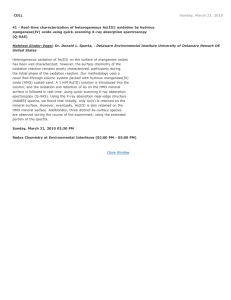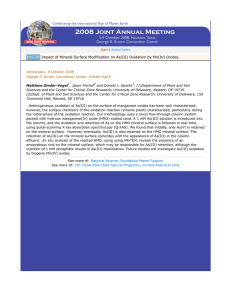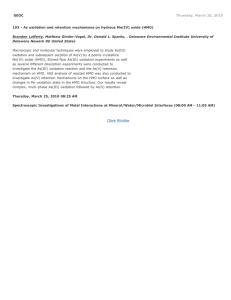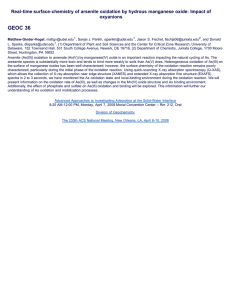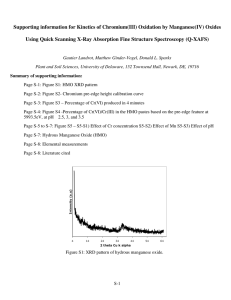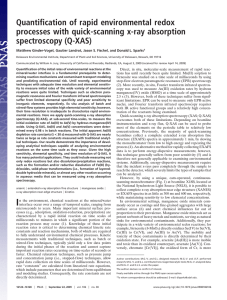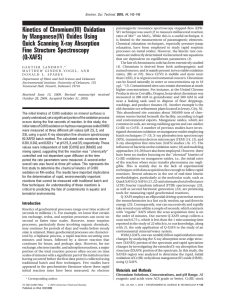GEOC 28 alteration
advertisement
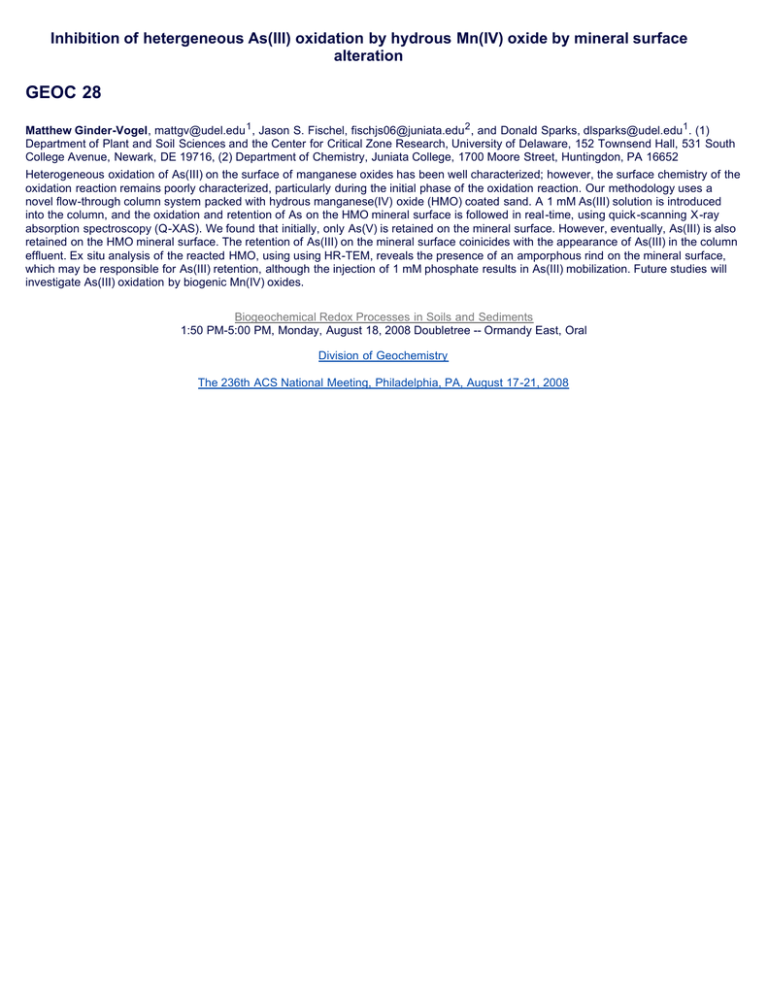
Inhibition of hetergeneous As(III) oxidation by hydrous Mn(IV) oxide by mineral surface alteration GEOC 28 Matthew Ginder-Vogel, mattgv@udel.edu 1 , Jason S. Fischel, fischjs06@juniata.edu 2 , and Donald Sparks, dlsparks@udel.edu1 . (1) Department of Plant and Soil Sciences and the Center for Critical Zone Research, University of Delaware, 152 Townsend Hall, 531 South College Avenue, Newark, DE 19716, (2) Department of Chemistry, Juniata College, 1700 Moore Street, Huntingdon, PA 16652 Heterogeneous oxidation of As(III) on the surface of manganese oxides has been well characterized; however, the surface chemistry of the oxidation reaction remains poorly characterized, particularly during the initial phase of the oxidation reaction. Our methodology uses a novel flow-through column system packed with hydrous manganese(IV) oxide (HMO) coated sand. A 1 mM As(III) solution is introduced into the column, and the oxidation and retention of As on the HMO mineral surface is followed in real-time, using quick-scanning X-ray absorption spectroscopy (Q-XAS). We found that initially, only As(V) is retained on the mineral surface. However, eventually, As(III) is also retained on the HMO mineral surface. The retention of As(III) on the mineral surface coinicides with the appearance of As(III) in the column effluent. Ex situ analysis of the reacted HMO, using using HR-TEM, reveals the presence of an amporphous rind on the mineral surface, which may be responsible for As(III) retention, although the injection of 1 mM phosphate results in As(III) mobilization. Future studies will investigate As(III) oxidation by biogenic Mn(IV) oxides. Biogeochemical Redox Processes in Soils and Sediments 1:50 PM-5:00 PM, Monday, August 18, 2008 Doubletree -- Ormandy East, Oral Division of Geochemistry The 236th ACS National Meeting, Philadelphia, PA, August 17-21, 2008
